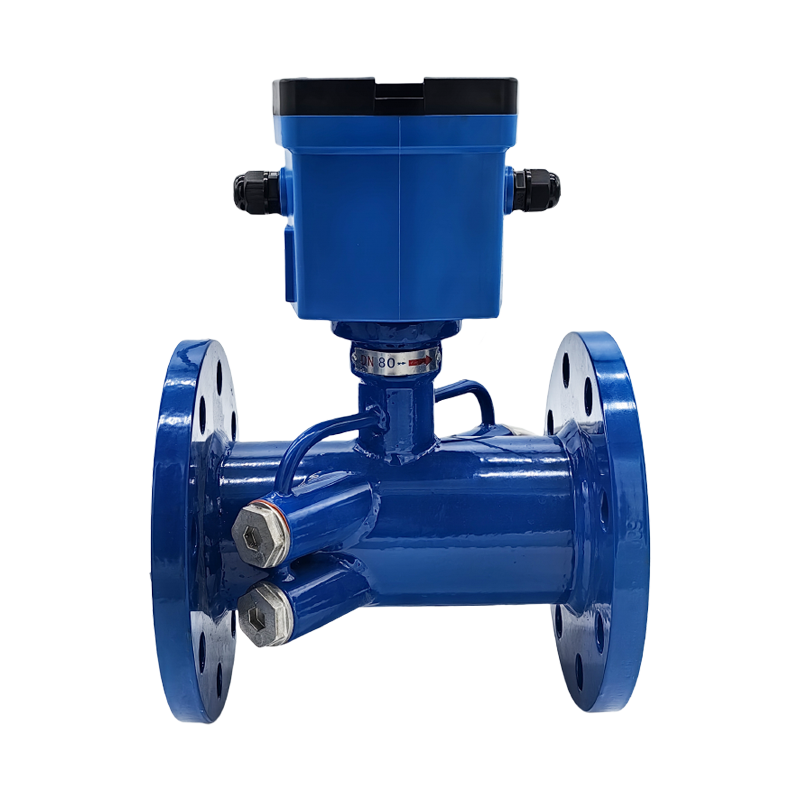Understanding Octave Ultrasonic Flow Meters: A Comprehensive Guide
May 10,2025

Ultrasonic flow meters have become increasingly popular in various industries for their ability to accurately measure flow rates of liquids and gases. Among the different types of ultrasonic flow meters, octave ultrasonic flow meters stand out for their unique operational features and advantages. This article aims to explore the functionality, benefits, and applications of octave ultrasonic flow meters, offering valuable knowledge for professionals in the field of gas and liquid metering instruments.
Octave ultrasonic flow meters operate based on the principle of measuring the time it takes for an ultrasonic signal to travel between transducers. By sending ultrasonic pulses through the fluid, these devices can determine the flow velocity, which is then used to calculate the overall flow rate. The term “octave” refers to the specific frequency range of the ultrasonic signals used, which can enhance the meter's ability to measure a wide variety of fluid types, including those with varying levels of viscosity, density, and temperature.
One of the primary advantages of octave ultrasonic flow meters is their non-intrusive nature. Unlike traditional mechanical flow meters, which may clog or wear out over time, ultrasonic meters can be installed on existing pipelines without affecting the flow of the liquid or gas. This feature not only reduces downtime during installation but also minimizes maintenance efforts. Additionally, octave ultrasonic flow meters are highly accurate, providing reliable measurements even in challenging conditions.
The versatility of octave ultrasonic flow meters makes them suitable for a wide array of applications. These meters are commonly used in industries such as water treatment, petrochemical processing, HVAC systems, and food and beverage production. Their ability to handle different flow media, including corrosive and viscous fluids, further broadens their applicability across various sectors.
Another notable feature of octave ultrasonic flow meters is their capability to provide real-time data and diagnostics. Many modern flow meters are equipped with advanced digital displays and communication interfaces, allowing for easy integration into existing monitoring systems. This functionality enables professionals to optimize processes, enhance productivity, and ensure compliance with industry standards.
Furthermore, the implementation of octave ultrasonic flow meters can contribute to sustainability efforts. By accurately measuring flow rates, organizations can identify inefficiencies in their systems and reduce waste, ultimately leading to lower operational costs and a smaller environmental footprint.
In conclusion, octave ultrasonic flow meters represent a significant advancement in flow measurement technology, offering numerous benefits such as accuracy, non-intrusiveness, and versatility. As industries continue to seek improvements in efficiency and sustainability, understanding the capabilities and applications of octave ultrasonic flow meters will be essential for professionals in the instrumentation sector.
Octave ultrasonic flow meters operate based on the principle of measuring the time it takes for an ultrasonic signal to travel between transducers. By sending ultrasonic pulses through the fluid, these devices can determine the flow velocity, which is then used to calculate the overall flow rate. The term “octave” refers to the specific frequency range of the ultrasonic signals used, which can enhance the meter's ability to measure a wide variety of fluid types, including those with varying levels of viscosity, density, and temperature.
One of the primary advantages of octave ultrasonic flow meters is their non-intrusive nature. Unlike traditional mechanical flow meters, which may clog or wear out over time, ultrasonic meters can be installed on existing pipelines without affecting the flow of the liquid or gas. This feature not only reduces downtime during installation but also minimizes maintenance efforts. Additionally, octave ultrasonic flow meters are highly accurate, providing reliable measurements even in challenging conditions.
The versatility of octave ultrasonic flow meters makes them suitable for a wide array of applications. These meters are commonly used in industries such as water treatment, petrochemical processing, HVAC systems, and food and beverage production. Their ability to handle different flow media, including corrosive and viscous fluids, further broadens their applicability across various sectors.
Another notable feature of octave ultrasonic flow meters is their capability to provide real-time data and diagnostics. Many modern flow meters are equipped with advanced digital displays and communication interfaces, allowing for easy integration into existing monitoring systems. This functionality enables professionals to optimize processes, enhance productivity, and ensure compliance with industry standards.
Furthermore, the implementation of octave ultrasonic flow meters can contribute to sustainability efforts. By accurately measuring flow rates, organizations can identify inefficiencies in their systems and reduce waste, ultimately leading to lower operational costs and a smaller environmental footprint.
In conclusion, octave ultrasonic flow meters represent a significant advancement in flow measurement technology, offering numerous benefits such as accuracy, non-intrusiveness, and versatility. As industries continue to seek improvements in efficiency and sustainability, understanding the capabilities and applications of octave ultrasonic flow meters will be essential for professionals in the instrumentation sector.
TAG:







